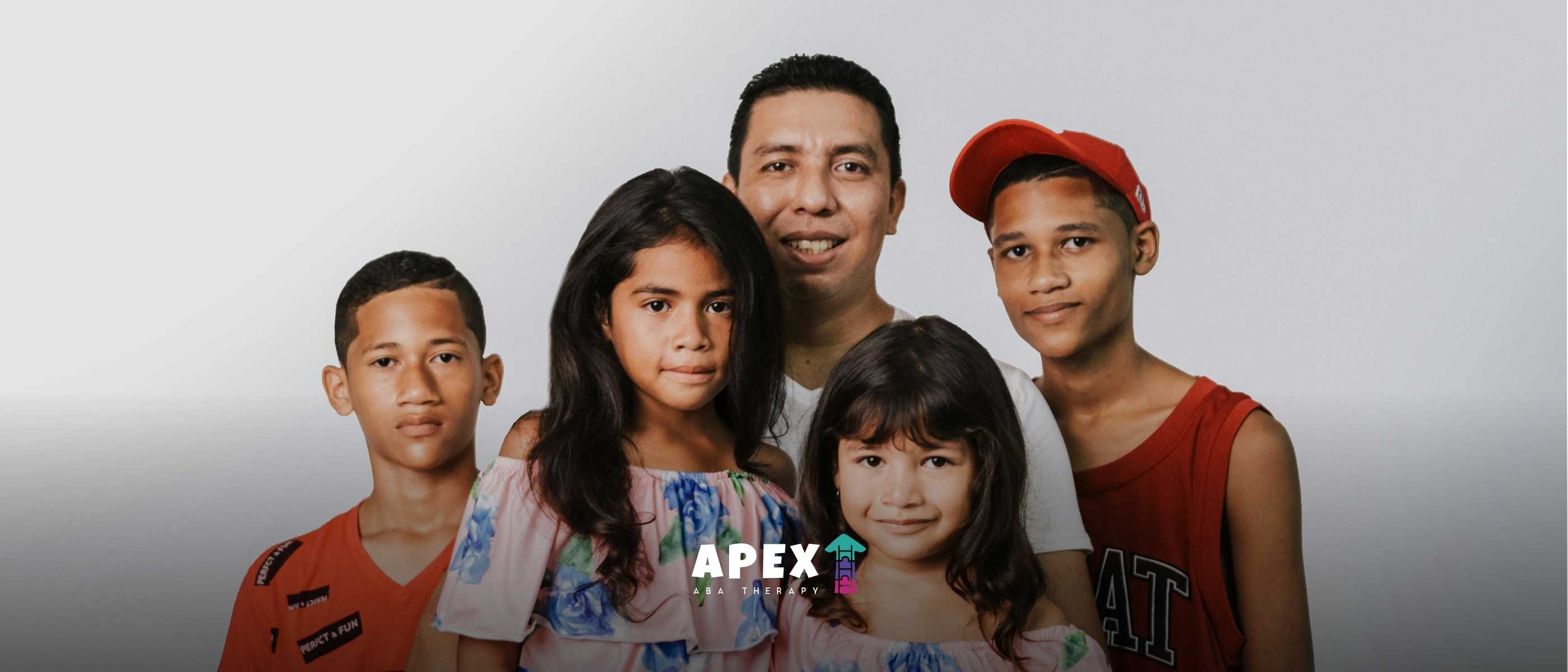Exploring the Classification of Autism Spectrum Disorder
Unraveling the complexities of autism spectrum disorder classification. Explore subtypes, diagnostic criteria, and personalized interventions.

Exploring the Classification of Autism Spectrum Disorder
Understanding Autism Spectrum Disorder
To gain a comprehensive understanding of Autism Spectrum Disorder (ASD), it is important to delve into its definition and overview, as well as its prevalence and diagnostic criteria.

Definition and Overview
ASD is a neurodevelopmental disorder characterized by persistent challenges in social interaction, communication, and the presence of restricted, repetitive patterns of behavior, interests, or activities. The Diagnostic and Statistical Manual of Mental Disorders, fifth edition (DSM-5), released in 2013, revised the diagnostic criteria for ASDs, merging the subtypes of autism into a single category. This shift aimed to focus on individual needs rather than fitting individuals into preconceived categories, allowing for a more tailored approach to intervention and support.
ASD affects individuals across a wide range of ages, ethnicities, and socioeconomic backgrounds. It is now recognized as one of the most common developmental disorders, with a significant increase in prevalence in recent years. Early recognition and diagnosis are crucial for timely intervention and treatment. The earlier the diagnosis, the earlier appropriate support can be provided to individuals with ASD.
Prevalence and Diagnostic Criteria
The prevalence of ASD has increased dramatically over time, partly due to increased awareness and improved diagnostic criteria. The DSM-5 criteria for ASD include deficits in social communication and interaction, as well as restricted, repetitive patterns of behavior, interests, or activities. Symptoms must be present in early childhood, even if they might not become fully manifest until social demands exceed limited capacities.
The severity of ASD is determined by the level of support an individual requires across different environments. It is based on the extent of social communication impairments and restricted, repetitive behaviors. Severity can range from mild to severe, with different levels of support needed for each individual.
Classification of ASD is based on the presence and severity of symptoms, with specifiers indicating additional challenges such as intellectual disability, language impairment, known genetic conditions, or catatonia. The DSM-5 provides a comprehensive framework for diagnosing and classifying ASD, ensuring that individuals receive appropriate support and interventions tailored to their specific needs.
Understanding the definition, overview, prevalence, and diagnostic criteria of ASD is crucial for identifying and supporting individuals with this neurodevelopmental disorder. By recognizing the early signs and symptoms, individuals with ASD can receive the necessary interventions and personalized support to thrive and reach their full potential.
Classification of Autism Spectrum Disorder
To better understand and classify Autism Spectrum Disorder (ASD), it is important to refer to the criteria outlined in the Diagnostic and Statistical Manual of Mental Disorders, Fifth Edition (DSM-5) published in 2013. The DSM-5 provides the most current diagnostic criteria for ASD, unifying all previously described subtypes under a single category [1].
The DSM-5 Criteria
The DSM-5 criteria for ASD focus on two core areas: deficits in social communication and social interaction, and restricted, repetitive patterns of behavior, interests, or activities. These symptoms must be present in early childhood, even if they may not become fully apparent until social demands exceed limited capacities. The DSM-5 emphasizes the importance of considering an individual's developmental history and current functioning to make an accurate diagnosis.
Levels of Severity
The severity of ASD is determined based on the level of support an individual requires across different environments. This severity classification takes into account social communication impairments and restricted, repetitive behaviors. The DSM-5 includes specifiers to indicate additional challenges such as intellectual disability, language impairment, known genetic conditions, or catatonia that may coexist with ASD [1].
ASD is classified into three levels based on the level of support an individual requires:

The severity levels in ASD aid healthcare providers in determining appropriate interventions, support services, and therapies for individuals with autism. By accurately assessing the level of support needed, healthcare professionals can tailor treatment plans to address the specific challenges and needs of each individual.
Subtypes of Autism Spectrum Disorder
Autism Spectrum Disorder (ASD) encompasses a range of subtypes that were previously defined in the DSM-IV, but were merged into a single diagnosis of ASD in the DSM-5 in 2013. The four subtypes of ASD are autistic disorder, Asperger's syndrome, pervasive developmental disorder not otherwise specified (PDD-NOS), and childhood disintegrative disorder.
Autistic Disorder
Autistic disorder, also known as classic autism, is characterized by delayed language skills, poor social interaction, and repetitive behaviors. Individuals with autistic disorder may experience challenges in both verbal and non-verbal communication. They may have difficulty understanding and using gestures, facial expressions, and tone of voice. Repetitive behaviors, such as hand-flapping, rocking, or rigid adherence to routines, are common in individuals with autistic disorder. Early intervention and specialized support can help individuals with autistic disorder thrive and develop their skills.
Asperger's Syndrome
Asperger's syndrome, also known as high-functioning autism, is characterized by higher language skills compared to autistic disorder. However, individuals with Asperger's syndrome often struggle with social functioning and may have difficulty understanding social cues and norms. They may exhibit restricted interests and engage in repetitive behaviors. Despite these challenges, individuals with Asperger's syndrome typically have average to above-average intelligence and may excel in certain areas, such as academics or specific hobbies. With appropriate support and interventions, individuals with Asperger's syndrome can enhance their social skills and lead fulfilling lives.
Pervasive Developmental Disorder Not Otherwise Specified (PDD-NOS)
Pervasive Developmental Disorder Not Otherwise Specified (PDD-NOS) was diagnosed when a child exhibited some signs of autism but did not meet the criteria for autistic disorder or Asperger's syndrome. It was a category used for individuals who displayed characteristics of ASD but did not fit into specific subtypes. PDD-NOS was applied to individuals who exhibited social and communication challenges, as well as repetitive behaviors, but did not fully meet the criteria for the other subtypes. With the change to a single ASD diagnosis in the DSM-5, the term PDD-NOS is no longer used, but the characteristics it encompassed are still considered within the broader diagnosis of ASD.
Childhood Disintegrative Disorder
Childhood disintegrative disorder is a rare condition where children develop typically for the first few years of life, but then experience a significant loss of previously acquired skills, such as language, social interaction, and motor abilities. This disorder typically manifests between the ages of 2 and 4. Children with childhood disintegrative disorder may display a decline in cognitive functioning and adaptive behaviors. Early identification and intervention are crucial to support individuals with childhood disintegrative disorder and address their unique needs.
Understanding the different subtypes of ASD can help parents, caregivers, and professionals identify specific strengths and weaknesses in individuals with ASD, allowing for more targeted support and interventions. The shift to a single diagnostic category of ASD in the DSM-5 offers a more personalized approach to assessment and support, focusing on the individual's unique needs rather than fitting them into predetermined categories.
Factors Influencing Autism Spectrum Disorder
Understanding the factors that contribute to Autism Spectrum Disorder (ASD) is crucial in unraveling the complexities of this condition. Two major influences that have been extensively studied are genetic factors and neuroimaging findings.
Genetic Factors
Genetic factors play a significant role in ASD, with heritability estimates ranging from 50-90%. Studies have identified various genetic variations associated with ASD, including chromosomal abnormalities, copy number variations (CNVs), and single gene mutations. Approximately 10% of ASD cases can be attributed to known single-gene defects and diagnosed medical conditions. These genetic factors contribute to alterations in synapse formation and function, which are crucial for proper neural development.
To delve deeper, copy number variants (CNVs) and mutations in genes encoding proteins crucial to synapse formation have been found in individuals with ASDs. Such variations can disrupt neural connectivity and communication, leading to the characteristic symptoms and challenges associated with ASD.
Neuroimaging Findings
Neuroimaging studies have provided valuable insights into the structural and functional differences in the brains of individuals with ASD. These studies have revealed alterations in brain volume, functional connectivity, and activation patterns in regions involved in social communication, language processing, and sensory integration [6].
Specifically, changes in interhemispheric and cortical connections have been observed, leading to deficits in language, social cognition, motor planning, and perception. These differences in brain connectivity and function contribute to the atypical behaviors and challenges experienced by individuals with ASD.
By investigating the genetic factors and neuroimaging findings associated with ASD, researchers aim to gain a deeper understanding of the underlying mechanisms and potential targets for intervention. However, it is important to note that the causes of ASD are multifaceted and not solely attributed to these factors alone. Ongoing research continues to shed light on the complex interplay between genetic and environmental influences in the development of ASD.
Signs and Symptoms of Autism Spectrum Disorder
Autism Spectrum Disorder (ASD) is characterized by a range of signs and symptoms that affect an individual's communication, social interaction, and behavior. Understanding these signs and symptoms is crucial for early identification and intervention. The key areas affected by ASD include communication challenges, social interaction difficulties, and restricted and repetitive behaviors.
Communication Challenges
One of the hallmark signs of ASD is communication challenges. Children with ASD may have delays in spoken language development or exhibit difficulties in using and understanding nonverbal communication cues [7]. They may struggle with maintaining conversations, initiating or responding to social interactions, and understanding abstract language or humor. Some individuals with ASD may rely on repetitive phrases or echolalia as a way to communicate.
Social Interaction Difficulties
Individuals with ASD often face challenges in social interactions. They may struggle with understanding and responding to social cues, such as facial expressions, body language, or tone of voice. Building and maintaining relationships can be difficult, as individuals with ASD may find it challenging to engage in reciprocal conversations or demonstrate empathy. They may have difficulty understanding or predicting the thoughts and feelings of others.
Restricted and Repetitive Behaviors
Restricted and repetitive behaviors are common in individuals with ASD. These behaviors can manifest in various forms, such as repetitive movements like rocking, hand flapping, or spinning objects. Individuals with ASD may develop intense interests in specific topics or objects, focusing on them to the exclusion of other activities. They may also adhere strictly to routines and rituals, becoming upset or anxious when these routines are disrupted.
The severity of these signs and symptoms can vary from person to person. The DSM-5 diagnostic criteria for ASD include persistent deficits in social communication and social interaction, restricted, repetitive patterns of behavior, early developmental period onset of symptoms, and clinically significant impairment in social, occupational, or other important areas of functioning. The severity levels in ASD help healthcare providers determine appropriate interventions, support services, and therapies for individuals with autism.
Understanding the signs and symptoms of ASD is crucial for early identification, intervention, and support. By recognizing these challenges, individuals with ASD can receive personalized assessments and tailored interventions to help them thrive and reach their full potential.
Personalized Assessment and Support
Individuals with Autism Spectrum Disorder (ASD) require personalized assessment and support to address their specific needs and challenges. By tailoring interventions and providing early diagnosis and intervention, individuals with ASD can experience improved outcomes and better quality of life.
Tailored Interventions
There are various interventions that can be tailored to meet the unique needs of individuals with ASD. These interventions aim to address specific areas of difficulty and promote skill development. Common interventions include:
- Behavior management: This focuses on teaching individuals with ASD appropriate behaviors and reducing challenging behaviors. Techniques such as applied behavior analysis (ABA) may be used to reinforce positive behaviors and discourage negative ones.
- Communication therapies: Since communication challenges are common among individuals with ASD, therapies such as speech-language therapy and social communication interventions can help improve verbal and nonverbal communication skills. These therapies may involve visual supports, augmentative and alternative communication (AAC) systems, and social skills training.
- Occupational therapy: Occupational therapy aims to improve individuals' ability to perform daily activities and develop skills necessary for independent living. It focuses on enhancing fine motor skills, sensory processing, self-care skills, and social interaction.
It's important to note that each individual with ASD may require a unique combination of interventions tailored to their specific strengths and challenges. Working closely with healthcare professionals, therapists, and educators can help determine the most effective interventions for each individual.
Importance of Early Diagnosis and Intervention
Early diagnosis and intervention play a crucial role in improving outcomes for individuals with ASD. Recognizing the early signs of autism spectrum disorder, such as a lack of or delay in spoken language development, repetitive phrases or movements, and difficulty understanding social cues, allows for early intervention.
Research indicates that early intervention can lead to significant improvements in communication skills, social interaction, behavior management, and overall development. Early diagnosis allows for timely access to appropriate interventions and support services, setting the foundation for positive outcomes.
The Diagnostic and Statistical Manual of Mental Disorders (DSM-5) recognizes three levels of autism severity: Level 1 (requiring support), Level 2 (requiring substantial support), and Level 3 (requiring very substantial support). This classification system facilitates personalized treatment and support based on each individual's needs and abilities.
By providing personalized assessments and tailored interventions, individuals with ASD can receive the support they need to thrive. Early diagnosis and intervention are essential for maximizing their potential and improving their overall quality of life.
Classification of Autism Spectrum Disorder
Autism Spectrum Disorder (ASD) is a complex neurodevelopmental condition that affects individuals in unique ways. Understanding the classification of ASD is crucial for accurately diagnosing and providing appropriate support to individuals on the spectrum. The Diagnostic and Statistical Manual of Mental Disorders (DSM-5) criteria and severity levels are used to classify ASD.
The DSM-5 Criteria
The DSM-5 diagnostic criteria for ASD include persistent deficits in social communication and social interaction, restricted and repetitive patterns of behavior, early developmental period onset of symptoms, and clinically significant impairment in social, occupational, or other important areas of functioning [8]. By using these criteria, healthcare professionals can identify and diagnose individuals with ASD based on their specific characteristics and impairments.
In the DSM-5, the previous separate diagnoses of autistic disorder, Asperger's syndrome, and pervasive developmental disorder-not otherwise specified (PDD-NOS) were merged into one diagnosis - ASD. This change aimed to focus on the individual's needs rather than fitting them into preconceived categories, allowing for a more tailored approach to intervention and support.
Levels of Severity
The DSM-5 recognizes three levels of autism severity: Level 1 (requiring support), Level 2 (requiring substantial support), and Level 3 (requiring very substantial support). These levels are determined based on the degree of support required for an individual to function effectively in daily life.
The severity levels in ASD help healthcare providers determine appropriate interventions, support services, and therapies for individuals with autism. They are based on the extent of deficits in social communication, restricted and repetitive behaviors, and levels of impairment in functioning. Each level represents a different degree of support needed:

Individuals with Level 1 ASD may experience difficulties with social interactions, while those with Level 3 may have severe impairments in communication, social skills, and behavior [4]. This framework allows for personalized treatment and support based on each individual's needs and abilities.
References
- https://www.ncbi.nlm.nih.gov/pmc/articles/PMC4342781/
- https://www.autismparentingmagazine.com/understanding-autism-subtypes/
- https://www.verywellhealth.com/what-are-the-three-levels-of-autism-260233
- https://www.autismspeaks.org/genetics-and-autism
- https://www.autismspeaks.org/neuroimaging-and-autism
- https://www.webmd.com/brain/autism/autism-spectrum-disorders
- https://www.autismspeaks.org/autism-diagnosis-criteria-dsm-5
Frequently Asked Questions

Discover How ABA Helps ADHD in Your Child’s Life
How ABA Therapy Helps Children with ADHD | Apex ABA

Life-Changing ABA Therapy Case Studies You Need to Know
Real Success Stories from ABA Therapy Journeys | Apex ABA

Understanding the Power of Functional Behavior Assessment ABA
Effective ABA Techniques for Behavioral Intervention

Can Children “Outgrow” Autism?
Can Children Outgrow Autism? Understanding the Facts

Is Autism a Mental Illness or a Developmental Disorder?
Mental Illness or Developmental Disorder Explained

Is Autism More Common in Boys Than Girls?
Autism in Boys vs Girls: What the Research Reveals

What Does It Mean to Be “On the Spectrum”?
What Does It Mean to Be on the Autism Spectrum? | Apex ABA

Can a Child Have Autism and Still Talk Normally?
Can a Child Have Autism and Still Talk Normally?

What Are the Red Flags for Autism in a 2-Year-Old?
Autism Red Flags in 2-Year-Old Children | Apex ABA

Is Autism a Lifelong Condition?
Is Autism a Lifelong Condition? Understanding The Journey

What is the Difference Between Autism and Sensory Processing Disorder?
Autism vs Sensory Processing Disorder Differences | Apex ABA

What's the Difference Between Autism and Speech Delay?
Autism vs Speech Delay & Key Differences Explained | Apex

ABA Therapy Enhancing Social Skills: A Key to Improved Communication and Interaction for Children with Autism
How ABA Therapy Helps Children Build Social Skills

Misconceptions About ABA Therapy: Clearing Up the Myths
Common Misconceptions About ABA Therapy |Apex ABA.

Best Age to Start ABA Therapy & What Parents Should Know
Best Age to Begin ABA Therapy for Children | Apex ABA

What’s the Difference Between High-Functioning Autism and Asperger’s?
Difference Between High-Functioning Autism and Asperger’s

ABA Therapy in North Carolina: A Complete Guide for Families
Learn everything about ABA therapy in North Carolina, including services, costs, insurance coverage, and how to choose the best ABA provider in North Carolina.

ABA Therapy vs Preschool: Making the Right Choice Explained
Learn the key differences between ABA therapy and preschool to help you choose the best option for supporting your child’s early learning and development.

Which Personality Type Is Most Likely to Be Autistic?
Which Personality Type Is Most Likely to Be Autistic? | Apex ABA

Why Consistency Matters: What Happens If ABA Therapy Ends Prematurely
What Happens If ABA Therapy Is Stopped Too Early? | Apex ABA

How Can You Gain an Autistic Person’s Attention? Tips for Meaningful Connection
How Can You Gain an Autistic Person’s Attention?

Sensory Sensitivity and Sixth Sense: What Autism Research Shows
Do Autistic People Have Sixth Sense? | Apex ABA

What Happens If Autism Is Left Untreated?
Can Autism Get Worse If Untreated? | Apex ABA

What Not To Do With An Autistic Child: Avoid These 10 Mistakes
What Not To Do With An Autistic Child? | Apex ABA

Coping with Regressive Autism: Tips for Parents
What is Regressive Autism? | Apex ABA

Do Autistic Kids Live with Parents Forever? Here’s the Reality
Do autistic kids live with parents forever? Discover the facts about independence and living arrangements in autism with expert-backed insights.

Red Flags in ABA Therapy: What Parents Must Watch For
What are the red flags in ABA therapy? Learn to identify warning signs for safe, effective autism treatment in this blog.

Can You Go from Level 3 Autism to Level 1? Is It Possible?
Can you go from level 3 autism to level 1? Learn about progress, therapy, and support options with expert help from Apex ABA.

Autism vs Introversion: How to Tell the Difference
Is it autism or just introversion? Learn the key differences and signs with expert insights from Apex ABA.

ABA for Managing Transitions: Tips to Ease Change for Kids
Learn how ABA for managing transitions helps children with autism handle change smoothly.

Understanding the 7 Dimensions of ABA for Better Outcomes
Discover the 7 Dimensions of ABA and how they can lead to better outcomes.

5 Unique Autistic Love Languages You Should Know About
Discover the 5 unique autistic love languages that can enhance your relationships.

Transforming Futures: Improving Lives of Kids with Autism
Discover how innovative strategies are focused on improving lives of kids with autism.

ABA Therapy Techniques for Addressing Repetitive Behaviors in Autism
Harnessing ABA Strategies to Tackle Repetitive Behaviors in Autism

The Role of ABA Therapy in Enhancing Communication Skills
Transforming Communication for Children with Autism Through ABA Therapy

How ABA Therapy Supports Effective Communication in Nonverbal Children
Unlocking Speech Through ABA: Transformative Paths for Nonverbal Children

How to Help Your Child Transfer Skills Learned in ABA Therapy to Real Life
Unlocking Real-World Success for Children in ABA Therapy

How ABA Therapy Helps Children Develop Better Organizational Skills
Empowering Children with ABA Therapy for Enhanced Organizational Skills

The Importance of Creating a Structured Routine in ABA Therapy
How Structured Routines Transform ABA Therapy for Autism

The Role of ABA Therapy in Developing Conflict Resolution Skills
How ABA Therapy Transforms Conflict Resolution Competence

The Importance of Generalization in ABA Therapy for Autism
Unraveling the Role of Generalization in Enhancing ABA Therapy Outcomes

Why ABA Therapy is Crucial for Parents of Children with Autism
The Transformative Impact of ABA Therapy on Families with Autistic Children

How to Involve Parents in the ABA Therapy Process
Maximize Parent Engagement in ABA Therapy for Better Outcomes

What are the Core Principles of ABA Therapy?
Exploring the Cornerstones of Applied Behavior Analysis

Why Communication is Key in ABA Therapy for Autism
The Crucial Role of Communication in ABA Therapy for Autism

Why ABA Therapy Works for Children with Autism Regardless of Severity
Effective ABA Interventions for All Levels of Autism

Why It’s Important to Maintain a Balanced Approach to ABA Therapy
Balancing Effectiveness and Ethics in ABA Therapy

The Role of ABA Therapy in Developing Adaptive Behavior Skills
Exploring How ABA Therapy Transforms Lives

The Benefits of Combining ABA Therapy with Speech Therapy
Maximizing Development with Integrated Therapy Approaches

What to Expect During an ABA Therapy Session
Demystifying ABA Therapy Sessions: A Comprehensive Overview

How ABA Therapy Enhances Cognitive Functioning in Children with Autism
Exploring the Influence of Applied Behavior Analysis on Autism Cognition

How ABA Therapy Helps Children with Autism with Transitions Between Activities
Easing Transitions for Children with Autism: The Role of ABA Therapy

How to Foster Cooperation Between Parents and Therapists in ABA Therapy
Building Effective Partnerships in ABA Therapy

The Role of Positive Reinforcement in ABA Therapy
Exploring the Impact of Positive Reinforcement in Modern ABA Therapy

Why ABA Therapy is Effective for Children of All Ages
Understanding the Reach and Impact of ABA Therapy Across Age Groups

How to Support Your Child’s Emotional Growth with ABA Therapy
Harnessing ABA Therapy for Enhancing Emotional Development in Children with Autism

The Role of ABA Therapy in Enhancing Peer Relationships for Children with Autism
Harnessing ABA Therapy to Boost Social Connections Among Autistic Children

How to Overcome Common Challenges in ABA Therapy
Navigating Hurdles in ABA Therapy: Strategies and Solutions

How to Manage Behavioral Expectations with ABA Therapy
Understanding Applied Behavior Analysis in Behavioral Management

How ABA Therapy Promotes Emotional Regulation in Children with Autism
Unlocking Emotional Balance: ABA Therapy's Role in Autism

How ABA Therapy Improves Social Skills in Children with Autism
Harnessing ABA Therapy to Enhance Social Competency in Autistic Children

The Role of ABA Therapy in Classroom Success for Children with Autism
Harnessing ABA for Academic and Social Growth in Autism

The Importance of Evaluating and Revising ABA Therapy Goals Regularly
Regular Evaluations: The Cornerstone of ABA Therapy Success

How to Choose the Right ABA Therapy Program for Your Child
Finding the Perfect ABA Therapy Fit for Your Child

The Role of Behavior Analysts in Implementing ABA Therapy
Understanding the Vital Contributions of Behavior Analysts in ABA Therapy

The Role of RBTs (Registered Behavior Technicians) in ABA Therapy
A Closer Look at the Essential Work of RBTs in ABA Therapy

What Makes ABA Therapy Effective for Different Learning Styles?
Unraveling the Flexibility and Effectiveness of ABA Therapy

Understanding the Importance of Data Collection in ABA Therapy
The Role of Data in Shaping Effective ABA Therapy

How ABA Therapy Helps with Toilet Training in Children with Autism
Unlocking Independence: ABA's Role in Autism Toilet Training

The Importance of Encouraging Natural Play in ABA Therapy
Revolutionizing ABA Therapy with Natural Play

How to Make the Most of ABA Therapy at Home
Enhancing ABA Therapy Practices Within Your Home

How to Make ABA Therapy Fun and Engaging for Children with Autism
Transforming ABA Therapy into a Fun Learning Journey

The Role of ABA Therapy in Addressing Verbal and Nonverbal Communication in Autism
Enhancing Communication Skills in Autism Through ABA Therapy

Understanding the Role of Family in ABA Therapy for Autism
The Crucial Impact of Family Engagement in Autism Therapy

How to Handle Setbacks and Challenges in ABA Therapy
Navigating Difficulties and Setbacks in ABA Therapy for Children

How ABA Therapy Can Help Children Build Stronger Relationships with Peers
Unpacking the Influence of ABA Therapy on Peer Relationships in Children

Understanding the Concept of Shaping in ABA Therapy
Demystifying Shaping Techniques in Applied Behavior Analysis

How ABA Therapy Enhances Independent Living Skills in Autism
Unlocking Independence: The Role of ABA Therapy in Autism
.jpg)
90+ Reading Statistics, Facts and Demographics
In this article, we will dive into 60 reading statistics that shed light on the importance of reading and its impact on different aspects of life.

How ABA Therapy Can Help Children with Autism Make Better Choices
Unlocking Autistic Children's Potential with ABA Therapy

How ABA Therapy Helps Children with Autism Adapt to New Environments
The Adaptive Benefits of ABA Therapy for Autism

What Does the Research Say About the Effectiveness of ABA Therapy?
Exploring the Role and Research Behind ABA Therapy

How to Create an Effective ABA Therapy Plan for Your Child
Guiding Parents Through Effective ABA Therapy Planning

The Long-Term Benefits of Consistent ABA Therapy for Children with Autism
Unlocking Potential: Consistent ABA Therapy for Autism

Why ABA Therapy Should Be Tailored to Each Child’s Unique Needs
The Necessity of Customizing ABA Therapy for Unique Child Development

What are the Different Types of ABA Therapy?
Exploring the Varieties of ABA Therapy for Autism and Beyond

How ABA Therapy Can Improve Functional Skills in Children with Autism
Unlocking the Potential: ABA Therapy for Autistic Children

How ABA Therapy Facilitates Peer Interaction for Children with Autism
Understanding the Impact of ABA Therapy on Autism and Peer Relationships

The Importance of Early Intervention in Autism Therapy
Unlocking Potential: The Crucial Role of Early Intervention in Autism

The Role of ABA Therapy in Creating Healthy Habits for Children with Autism
Understanding How ABA Therapy Shapes Daily Life for Autistic Children

How to Create a Supportive Environment for Children Undergoing ABA Therapy
Crafting a Nurturing Space for Effective ABA Therapy

The Benefits of Incorporating Technology into ABA Therapy
Harnessing Technology for Enhanced ABA Therapy Outcomes

How ABA Therapy Helps with Stereotypic Behavior in Autism
ABA Therapy: Transforming Stereotypic Behaviors into Meaningful Interactions in Autism

What to Expect in an ABA Therapy Program for Children with Autism
Understanding ABA Therapy for Kids with Autism

How to Create a Positive Home Environment for Children Under ABA Therapy
Cultivating a Therapeutic Space for ABA Success

How ABA Therapy Can Improve Safety Awareness in Children with Autism
Empowering Safety through ABA Therapy for Kids with Autism

The Link Between ABA Therapy and Improved Academic Performance in Children with Autism
Exploring the Profound Impact of ABA on Autism-Related Educational Success

The Benefits of Early ABA Intervention for Toddlers with Autism
Unveiling the Power of ABA for Toddlers with Autism

How ABA Therapy Promotes Independence and Life Skills Development
Unlocking Independence: The Role of ABA Therapy in Life Skills Development

How to Deal with the Emotional Impact of ABA Therapy on Parents
Navigating Emotions: Support Tips for Parents in ABA Therapy



